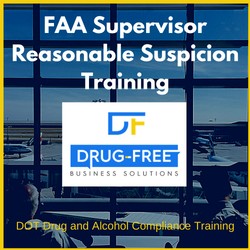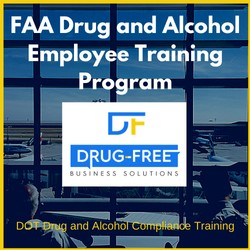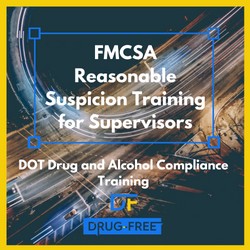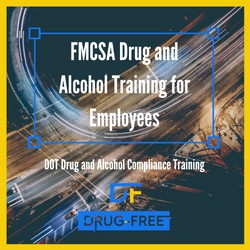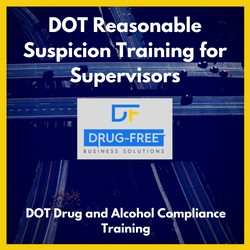What is the DOT Return-To-Duty process? It is the process of an employee who has failed a drug test returning to work.
We go over the steps of the DOT return-to-duty process in this course.
Learn about the return to duty drug testing policy, involving return to duty drug testing and follow-up drug testing for DOT.
The course also discusses the responsibilities of employees, employers, and the substance abuse professional (SAP) in the rehabilitation and post-rehab process.
The course is intended for both DOT supervisors and designated employer representatives.
In the course you will learn:
Steps of the Return-to-Duty Process for Employees
By design, the DOT return-to-duty process is neither simple nor easy.
This course explains the steps an employee must follow after a positive DOT alcohol or drug test to be eligible to return to safety-sensitive duties in any DOT drug and alcohol testing program.
Responsibilities of the Employee and the Employer
Both the employee and the employer must take care of certain responsibilities in the return-to-duty process.
Employees must agree to return-to-duty and follow-up testing, and they must pass those drug tests.
They must get evaluation, treatment, and education for substance abuse problems, and all evaluation, treatment, and education must be documented appropriately for the DOT.
Employers must make sure that employees take part in all necessary evaluation, treatment, and education for substance abuse issues.
The Substance Abuse Professional (SAP) Role
The SAP is a third-party between the employee and the employer. They are tasked with looking over the return-to-duty process with public safety in mind.
The DOT SAP program takes as long as the SAP deems necessary.
The SAP evaluates the employee and determines what type of education or treatment is required, follows up with the employee to ensure the employee gets that treatment and education, instructs the employee to take the return-to-duty drug test, and the sets the follow-up drug testing schedule.
Remember, the SAP is a third party whose goal is to keep the public safe, and the DOT SAP program takes as long as the SAP deems necessary to keep the public safe.
If the employee had one slip up, and the SAP recognizes that there is no substance abuse issue, then the process can be swift – or at least as swift as it possibly could be.
If the employee has a true substance dependence, then the SAP may require the employee trying to return to duty to take part in ample treatment and education before allowing the employee to take the return-to-duty drug test.
The Rules for DOT Return-to-Duty Drug Testing and Follow-Up Testing
First, let’s clarify what a return-to-duty drug test and follow-up drug test are.
A return-to-duty drug test is the drug test employers administer to employees who have a drug test failure and are trying to return to their work.
It is the drug test an employee must pass to return to duty, hence the name.
A follow-up drug test is a drug test for an employee who has returned to duty after a failed drug test. The employee is under close monitor for substance abuse as a result.
Follow up testing begins as soon as the employee passes the return-to-duty drug test and starts working again.
Remember, the SAP sets a schedule for follow-up drug testing to monitor whether the employee has any slip-ups.
We discuss the rules for how you are to handle each drug test. The DOT has specific guidelines for each.
